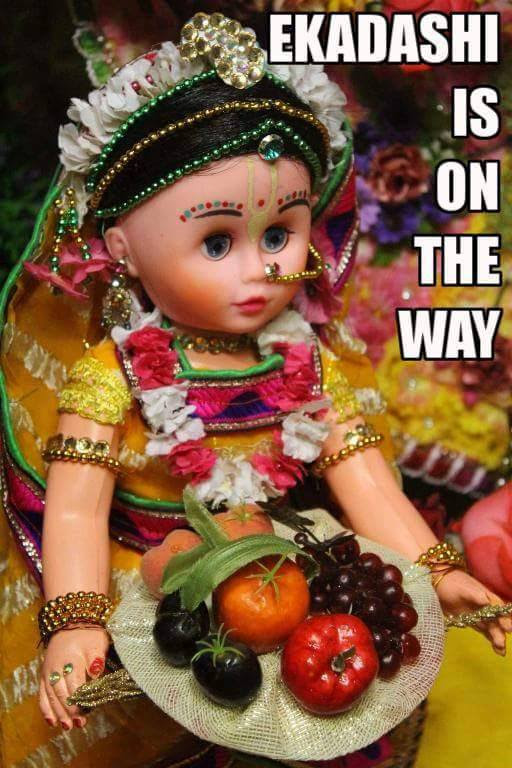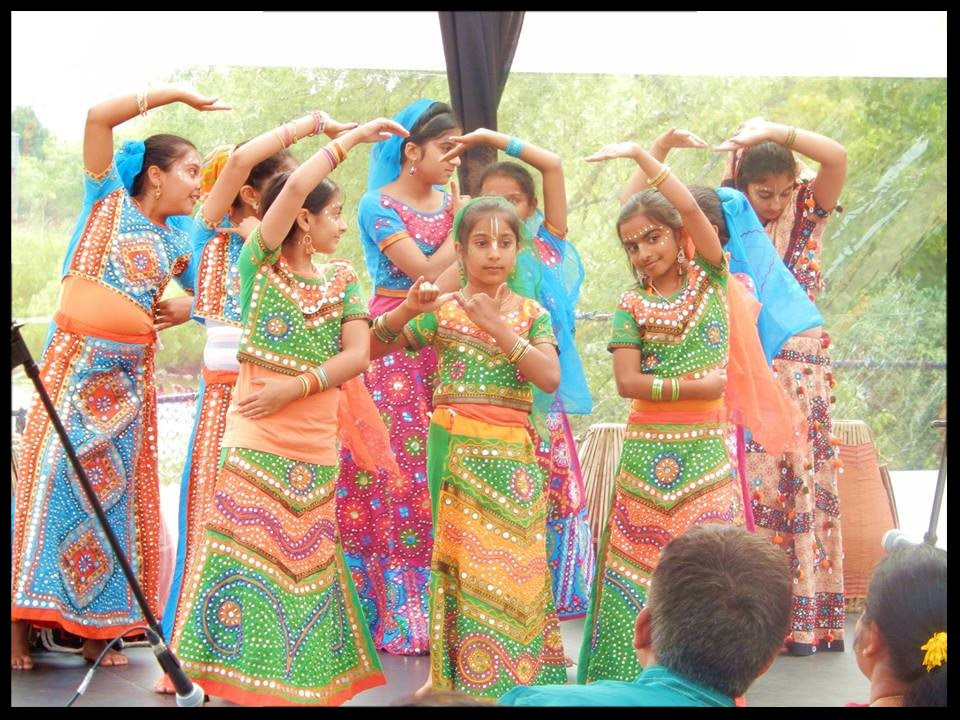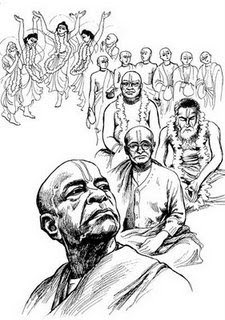After studying the 14th chapter of Gita someone very feelingly asked, “I see people take to bhakti or other yogas very unnaturally, fanatically, and they wind up extremely depressed and stressed out. How can we follow bhakti or any spiritual path more naturally – not full of repression and artificial stuff?”
What is Natural for Conditioned Souls?
Natural is an adjective from the noun, nature, which is from the root, nat- which means “inherent.” Natural action is not forced. It is an automatic result of what is inherent in us. Natural things exist inherently, they doesn’t have to be manufactured artificially.
Our inherent nature is full of desire to enjoy the external field of perception. So our practices cannot be completely natural; there will have to be effort involved.
The key is to practice at a level we can sustain, and to gradually increase what we can sustain.
Unfortunately, vidyā and bhakti are just not natural for us. Our inherent nature is full of bhukti – endeavor to enjoy the external field of perception. So our practices cannot be completely natural; there will have to be effort involved. They key, however, is the find a level of effort that our nature can sustain and support. This would be, relatively speaking, “natural practice.”
Bhakti Never Causes Stress or Depression
Rajaḥ, not bhakti, causes stress and tamaḥ, not bhakti, causes depression. But if this is true, why are many spiritual practitioners stressed out and depressed? I see two reasons: (1) they are not practicing as much as they can, (2) they are practicing more than is naturally sustainable for them.
Overzealousness occurs because we treat bhakti-yoga as another external object, trying to aquire more of it as a way to enjoy pleasures like renown, prestige, superiority, etc. These desires are raja-guṇa and cause distress.
In the first case, they are not getting rid of rajaḥ and tamaḥ as quickly as they could be. In the second case, they are brining rajaḥ and tamaḥ into their concept of sādhana. The overzealousness of the second case occurs because we treat bhakti-yoga as another external object, trying to aquire more of it as a way to enjoy pleasures like renown, prestige, superiority, etc. These desires are raja-guṇa and cause distress. And since raja-guṇa inariably invokes tamo-guṇa, that stress invariably leads to depression.
The key, then, is to practice at a level we can sustain, and to gradually increase what we can sustain.
How can we do that?
Upgrade Your Nature
All sādhana is based on śraddhā. The root of that word, śrad, literally refers to our “heart.”Śraddhā is about our nature. If our sādhana is more intense than what our śraddhā can support, it will fall over like the famous Leaning Tower of Pisa – which falls over because the ground beneath it cannot support its weight.
The weight of our sādhana has to be supported by what we comprehend about life. We cannot expect to sustain something difficult if we don’t really understand the importance and realness of doing it.
The most important thing is to deepen our comprehension of life. The deeper our comprehension, the more sādhana-weight we can naturally support.
The most important thing is to deepen what we comprehend about life. The deeper our comprehension, the more sādhana-weight we can naturally support. Getting rid of misconceptions about life (anartha-nivṛtti) leads to niṣṭhā – deep and steady practice, which soon brings ruci – very significant positive experiences that radically upgrade the śraddhā.
Don’t Just “Read” or “Hear” or “Study”… THINK, SEARCH, EXPLORE, DISCOVER!
To deepen our comprehension of life, we should turn to śāstra.
Śāstra is often difficult to comprehend, so it is essential to find someone who, to the best of your estimation, seems to really comprehend it, and ask them to explain it to you.
In many modern circles of practitioners there is a strong taboo against creative exploration and investigation of the śāstra (“speculation”), but this, sadly, is a huge impediment to spirituality.
Once you have an explanation, you have to really explore it, search the limits of how you understand it. Discover it. Don’t just “believe it” or “have faith in it” or “accept it” or even scholastically “learn it.” See it, taste it, feel it in the real world. In many modern circles of practitioners there is a strong taboo against creative exploration and investigation of the śāstra (“speculation”), but this, sadly, is a huge impediment to spirituality. In other circles śāstra is treated as an object of scholarship. This too falls short of the mark. Explore śāstra with your heart, and with your sādhana, too! Explore it until you understand it as well as you understand how to make toast, and see it as plainly as you see everything else you accept as real. You will probably make lost of mistakes, but that’s what learning is all about. Keep close to the sādhu-guru who really comprehends śāstra so that the flaws in your explorations and the misperceptions in your discoveries can gradually be ironed out. This exploration alone will make śāstra’s vidyā part of your nature, part of your heart, your śraddhā; allowing you to increase your practice in a sattvika manner.
Explore it until you understand it as well as you understand how to make toast, and see it as plainly as you see everything else you accept as real.
Very inquisitive, honest and thorough study of śāstra is absolutely essential. Understand the fundamentals of tattva, explained in summary in Bhagavad Gītā and much more elaborately in Bhāgavata Purāṇa bit by bit, step by step, patiently but thoroughly. Practice to the extent comes naturally as a result of what you have truly understood and can percieve as being true. If you keep this up, you will soon become truly advanced in bhakti-sādhana, and will attain its sublime goals.
Vraja Kishor das
www.vrajakishor.com
Tagged:
Natural practice,
Natural spirituality,
Sadhana 









 By the TOVP Team
By the TOVP Team











 By Visakha Dasi
By Visakha Dasi By Nayana Manjari Dasi
By Nayana Manjari Dasi


 By Jaganmohini devi dasi and Subal Shyam das
By Jaganmohini devi dasi and Subal Shyam das

 Moksada Ekadasi
Moksada Ekadasi Japathon-Congregational Mantra Meditation
Japathon-Congregational Mantra Meditation Monthly sankirtan Festival(MSF)
Monthly sankirtan Festival(MSF) IB Vaishnavi Sanga
IB Vaishnavi Sanga
 The Mentorship Program
The Mentorship Program


